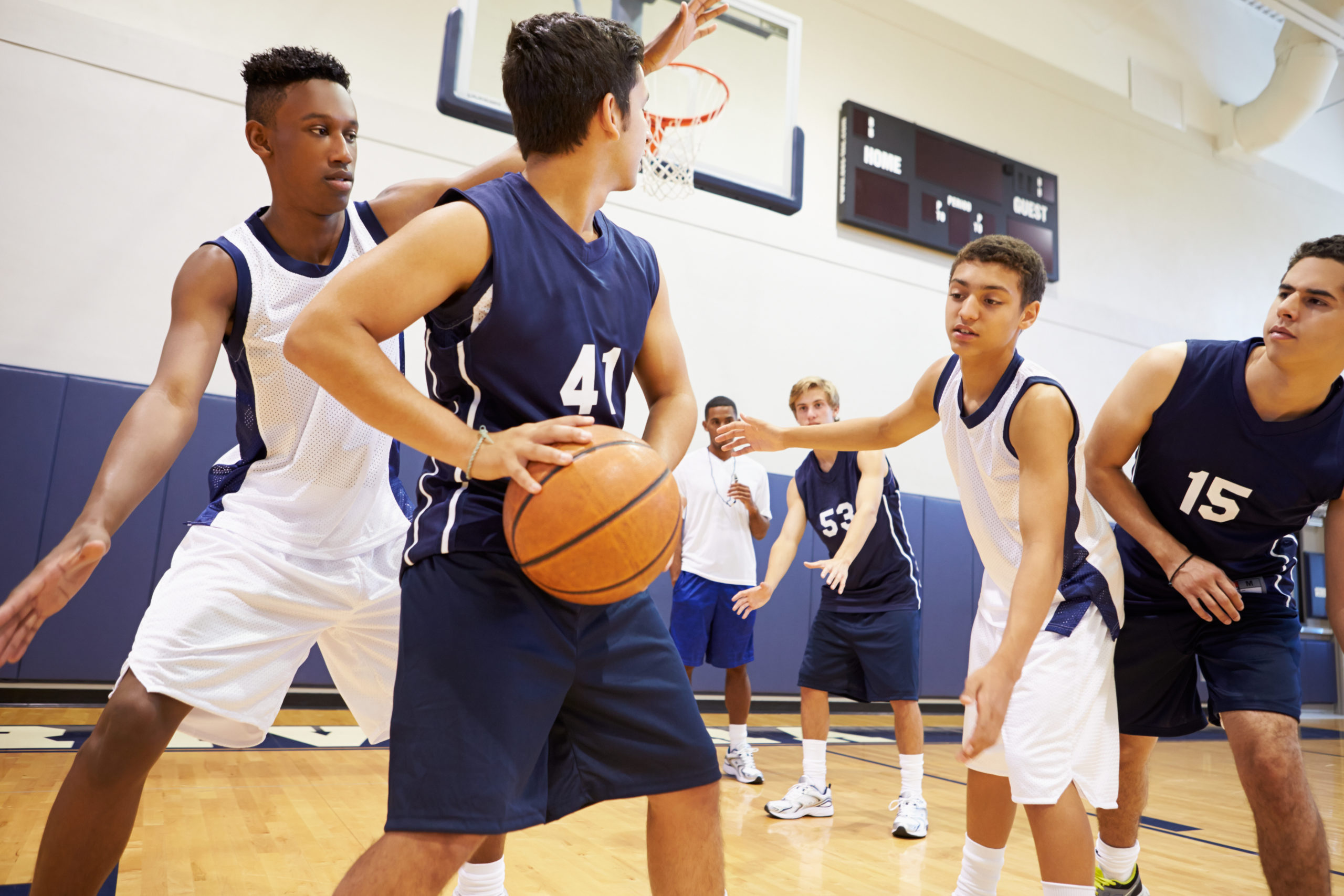Bruce Capers
Gordon State College
March 8th, 2023
College Athlete Scholarships: Myths vs. Facts
One of the first questions a recruit or their parents always ask me is “is this offer a full scholarship”?
There are a lot of myths and facts surrounding student-athletes receiving athletic scholarships. At the Division 1 level, only about 57% of the athletes receive financial aid, from book scholarships to full scholarships. The amount is slightly higher at the division 2 level at 63%. However, division 1 schools, on average, manage the largest athletic budgets that provide the most funding for athletic scholarships.
The NCAA Division 1 and 2 schools provide more than $3.6 billion in athletic scholarships annually to more than 180,000 student-athletes. Only 2% of high school student-athletes are awarded athletic scholarships to compete in college.
Full Athletic Scholarships
Most athletes do not receive a full athletic scholarship. There is just over 1% of student-athletes who receives what is called a “full ride.” A full-ride scholarship is an award that covers all expenses related to college which includes things like tuition, books, fees, room & board, and living costs.
The goal is to remove any need for additional financial aid. A partial athletic scholarship will only cover a portion of those expenses needed to pay for college. An athletic scholarship may only cover a portion of fees like parking fines, single dorm room, dorm deposits, application fees, school ID, library fines, and late fees may not be covered.
There are over 351 universities in D1 and 313 in D2 out of a total of 2,081 colleges in all divisions. Only 85 full-ride scholarships are available to NCAA D1 universities annually.
The average athletic scholarship amount is around $18,000 per student. However, not every student receives this much. Track and field scholarships are often considered the most accessible and easier to obtain.
Easiest Men's Scholarship to Earn
Lacrosse
Ice Hockey
Baseball
Football
Swimming
Hardest Men's Scholarship to Earn
Wrestling
Volleyball
Basketball
Easiest Women's Scholarship to Earn
Ice Hockey
Lacrosse
Soccer
Field Hockey
Swimming
Hardest Women's Scholarship to Earn
1. Volleyball
2. Basketball
3. Tennis
Myth #1
Athletic scholarships are guaranteed for 4 years.
Truth #1
Athletic scholarships are a 1-year renewable deal. However, there is an exception for significant conferences (power 5).
Myth #2
You must play at the division 1 level to receive an athletic sports scholarship. FALSE
Myth #3
Good grades are a requirement of an athletic scholarship. TRUE
Myth #4
College coaches contact athletes directly. TRUE, but on a limited basis
Myth #5
Athletic scholarships are only for football, basketball, and baseball. FALSE
Every college provides athletic scholarships. FALSE,
Most Division 1, 2, NAIA, and JUCO institution offers some form of scholarships, but Division 3 and the IVY League schools do not. By not offering athletic scholarships, they believe they are creating a true student-athlete
What Can Athletic Scholarships Be Used For
In most sports, an athletic scholarship is a partial payment toward tuition, room & board, or books. Here are several NCAA regulatory changes to athletic scholarships:
The NCAA has now dropped standardized testing as a requirement for initial eligibility.
Name Image and Likeness reform. (NIL).Student-athletes are now allowed to monetize their intellectual property rights just like any other college student. They can get paid for social media exposure, camps & clinics, public speaking, and appearances.
The NCAA now allows a broader interpretation of educational-related expenses. This means student-athletes can negotiate scholarships that include more than just tuition, room/board, books, and fees. Institutions can now provide specific living, travel, and educational expenses.
The Transfer Portal, a searchable database by the NCAA, has changed for coaches and athletes recruiting in general. It allows athletes to transfer to another institution without sitting out a year.
Partial Scholarships and Other Financial Aid
Many institutions at various levels that only offer partial athletic scholarships find and combine other resources to minimize expenses for student-athletes.
For example, some institutions like NAIA and Junior Colleges combine athletic aid with financial aid (FAFSA Pell Grant), work-study positions, student need base grants, academic scholarships, non-profit organizations, private scholarships offerings from individuals or corporations, athletic team Fundraising, and student loans to provide additional resources to supplement the lack of athletic aid.
What it Takes to be a Student Athlete
Student-athletes, despite what many choose to believe, do not have it easy. Students must be able to meet minimum requirements and keep academic and athletic performance to a certain level. They also must worry about extracurricular activities, social life, internships, staying in excellent shape, and getting a good night’s sleep.
A study published by Northeastern University states that 95% of male student-athletes and 85% of female athletes report higher stress than 52% of non-student athletes.
Walk-Ons
Student-athletes don’t need a scholarship to play collegiate sports. A walk-on is an athlete who has been offered the opportunity to compete for a team’s roster spot without the guarantee of a scholarship.
Loss of Athletic Scholarships
Loss of athletic scholarships is an unfortunate reality of college athletics is that scholarships can be lost for various reasons.
For example, verbal scholarships are non-binding. Injuries often happen, coaches can choose not to renew an athletic scholarship, or academic performance does not meet the standard or requirement of the institution or governing body like the NCAA, NAIA, or JUCO.
Tips to Receive a Scholarship
Athletic scholarships are highly competitive, which is why only a few student-athletes are offered one. Here are several tips for positioning yourself to receive a scholarship offer.
- Start your process early
- Make coaching connections
- Stay strong academically
- Choose the right program that fits your game
- Attend college camps, clinics, and showcases
- Good appearance (how you look)
- Perform with a high motor
- Be coachable
- Reveal leadership skills
- Understand, identify, and select your appropriate level to skill set
- Collect necessary information like highlight or skill video, stats, academic transcript, ACT/SAT scores
- Have great communication skills with coaches (1st impressions are everlasting)
- Know the rules of the eligibility center
- Take campus visits to develop you comfort level
- Send updated stats, video, etc.
Athletic Association | Number of schools | Number of athletes | Scholarships Max |
NCAA D1 | 350 | 139,063 | 74,243 |
NCAA D2 | 310 | 85,385 | 36,343 |
NCAA D3 | 438 | 144,062 | 0 |
NAIA | 260 | 56,354 | 25,778 |
NJCAA | 464 | 53,248 | 41,195 |
Other | 276 | 39,737 | N/A |
Totals | 2,058 | 517,849 | 177,559 |
Academic scholarships are much more secure than athletic scholarships. You can lose your athletic scholarship due to injury or poor performance, but if you maintain your grades, you will keep your academic scholarship even if you are no longer playing.
As mentioned earlier in the article that only 2% of high school athletes receive athletic scholarships. They must meet academic requirements and performance standards to renew scholarships after 1 year. Coaches may choose to go in another direction and not renew your scholarship.
It’s a tough business, but if you are committed and consistently work on your skills, you may be offered an athletic scholarship. Separate yourself from other athletes by maintaining an incredible work ethic, good character, solid academics, and the ability to perform and compete at a high level.
When communicating or in an environment with college coaches, make sure you have the necessary information for coaches, say the right things, and put yourself in a position to get your scholarship.


